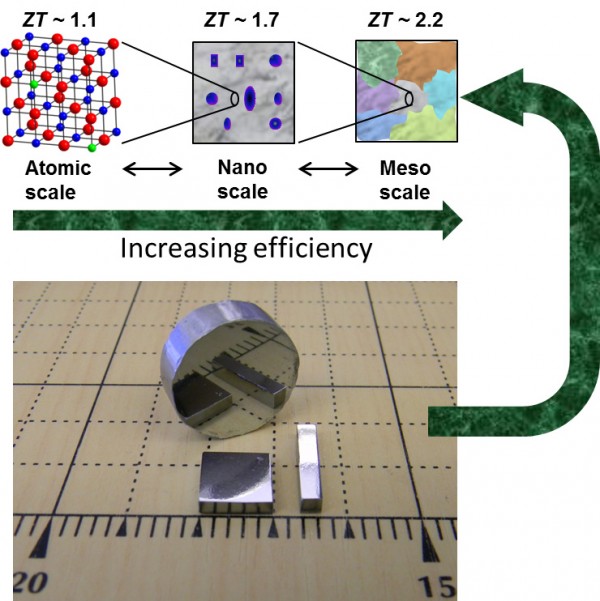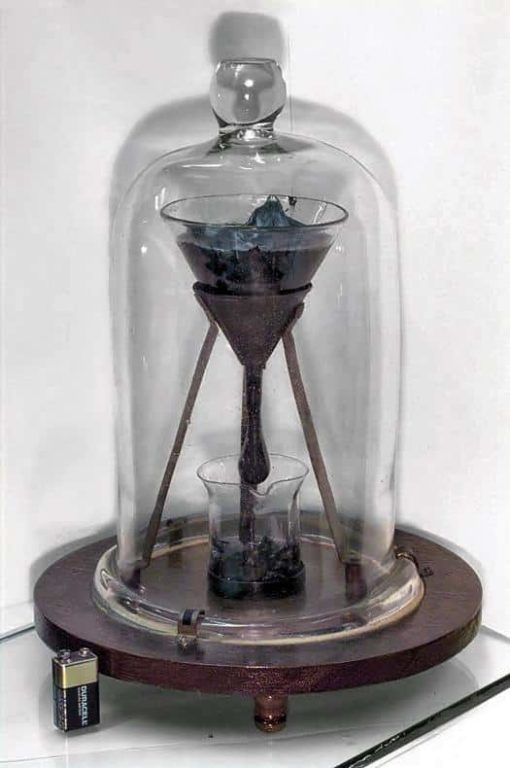For decades, physicists have toyed with ways to convert heat into electricity directly. Materials known as thermoelectrics use temperature differences to drive electrons from one end to another. The displaced electrons create a voltage that can in turn be used to power other things, like a battery. But, existing technologies can turn only 5–7% of heat energy into electricity. So, building a better thermoelectric totally depends on finding materials that conduct electricity, but not heat. Recently, some scientists at Northwestern University have created a new material from lead telluride and believes that the material is able to convert waste heat to electricity.
Mercouri G. Kanatzidis is an inorganic chemist at Northwestern University in Evanston, Illinois. He wanted to build a new material that could be a better thermoelectric. So he and his team started working on it in 2004 with the most well-known thermoelectric – lead telluride (PbTe). PbTe has an ordered lattice structure. First, the team scattered in a few sodium atoms to boost the PbTe’s electrical conductivity. Then they shoved it to another thermoelectric material – strontium telluride (SrTe). The crystals allowed the electrons to pass, but disrupted the flow of heat at short scales and preserved the temperature gradient. In order to stop the heat flow over longer scales, the team created a fractured version of their thermoelectric crystal. The cracks allowed electrons to move but reflected heat vibrations in the crystal.
Mercouri G. Kanatzidis said, “Our system is the top-performing thermoelectric system at any temperature. The material can convert heat to electricity at the highest possible efficiency. At this level, there are realistic prospects for recovering high-temperature waste heat and turning it into useful energy.”
Scientists rated the performance of a thermoelectric material by a measure known as ZT.It can calculate the materials’s ability to produce a voltage, its ability of conducting electricity (which should be high) and its ability of conducting heat (which should be low). The higher a material’s ZT, the more efficient it is at converting heat to electricity. After long experiments, researchers achieved the best ZT values between 1.6 and 1.8, but later the newly developed material achieved a world-record ZT of 2.2 at 642 °C.
Kanatzidis said, “Every time a phonon is scattered the thermal conductivity gets lower, which is what we want for increased efficiency.”
A phonon is a quantum of vibrational energy, and each has a different wavelength. When heat flows through a material, a spectrum of phonons needs to be scattered at different wavelengths (short, intermediate and long). However, the newly created material has a conversion efficiency of 15% nearly which is double than that of normal PbTe thermoelectrics. The newly created material works optimally at 650°C temperature. Researchers are hopeful that this new material can be used in power plants and industrial facilities to generate sizeable electric power from the bulk of heat energy that is produced there. The performance of the new material has been mentioned nearly 30% more efficient than its predecessor. Researchers believe that at 650°C temperature, the newly developed material can convert nearly 20% more of the thermal energy into electric power compared to current ones.
The material isn’t prohibitively expensive. It can be used to create more viable and efficient thermoelectric systems. Now, Kanatzidis and his colleagues want to design materials with even higher ZT values, possibly 2.5 or 3. (A ZT of 3 is about 2.4 times as efficient as a ZT of 1.) They also want to develop thermoelectric materials that don’t require tellurium, which is about as rare as platinum. Rather they might use lead selenide and lead sulfide.
If you want to know more then you can head over to the journal Nature, where researchers have described the new thermoelectric material.
Source : Nature
Thanks To : IEEE, Technology Review
[ttjad keyword=”solar-device”]



